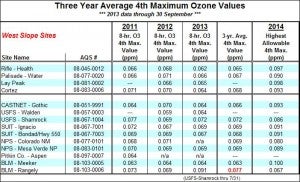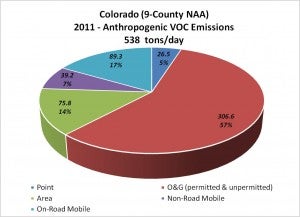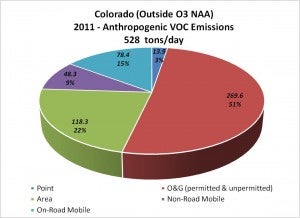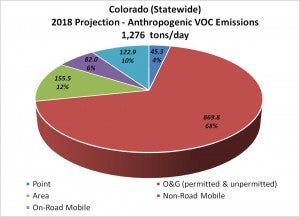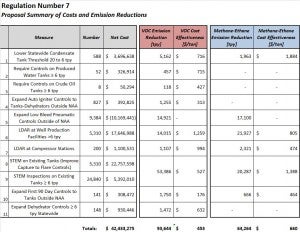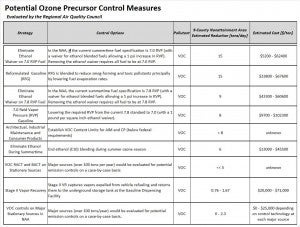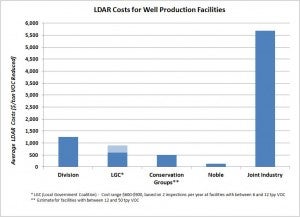
Yesterday, we covered the Colorado Air Quality Control Commission (AQCC) taking public testimony from citizens who traveled from around the state to speak in support of a groundbreaking proposal that would slash emissions of smog-forming pollutants and greenhouse gases coming from oil and gas activities.
Formal proceedings kicked off today – and will likely run through the weekend – with various parties presenting their opening cases. EDF went early in the day, providing strong evidence that the proposed rule is cost-effective and urgently needed to combat local air quality problems and climate change. We also highlighted some glaring flaws in the methodology industry opponents cooked up to show inflated costs for the rules.
The Colorado Oil and Gas Association (COGA), the Colorado Petroleum Association (CPA) and the DGS group are throwing everything they can at the rule to try to gut it. But they’re in a shrinking minority on the wrong side of history.
Noble, Anadarko, Encana and DCP – leading companies operating in Colorado that would carry 75 percent of the cost of the program – also presented. They showed, using actual data from their own operations, that the proposal would result in important pollution reductions at a manageable cost.
Below are some highlights from the presentation made by Colorado’s Air Pollution Control Division (APCD) staff – the folks who are charged with balancing the need for air pollution reductions against the cost of achieving them. What emerges is a clear picture:
- Air quality is suffering around the state, and oil and gas activities are responsible for a large share of the pollutants.
- The proposed rules are a highly cost-effective way of getting emission reductions.
- The case being made by industry opponents is wildly out of step with conventional thinking and analysis.
Here are the APCD highlights:
(Click images to enlarge)
If the U.S. EPA lowers the ozone standard from 75 ppm to 65 ppm, as many expect will soon happen, 10 out of 11 ozone monitors stationed across the Western Slope show that region will be in violation of national health standards.
Oil and gas activity is the single largest anthropogenic source of ozone-forming VOC emissions both inside and outside of the Denver Metro nonattainment area. Moreover, without new strategies in place, VOCs from oil and gas are expected to grow in coming years, even while VOCs from other sources shrink.
The proposed rules are incredibly cost-effective. By regulatory standards, any strategy that can reduce VOC emissions at a cost of $5,000/ton or less is deemed cost effective. The proposed rules would reduce VOC and methane emission at about a tenth that cost. By comparison, a number of strategies that have been evaluated for reducing VOCs from sectors other than oil and gas come in at costs on the order of a hundred times higher.
A wide range of stakeholders agree these rules are highly cost effective. Take a look at the costs different parties estimate for one important part of the proposed rules – leak detection and repair (LDAR) for fugitive emissions. The state says reducing VOCs through LDAR costs less than $1,300/ton – well within the range of cost-effectiveness. Noble Energy, one of Colorado’s biggest oil and gas producers, says LDAR costs a tiny fraction of what the state estimates. …But look at what the industry opposition group says! This, folks, is what we might charitably call an “outlier.”
The AQCC hears formal testimony on the proposed rule on Feb. 20 and 21– possibly extending into the weekend.










